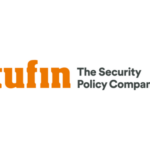Published February 7th, 2024 by Avigdor Book
Welcome to the era of Zero Trust security, where traditional network boundaries have dissolved, and trust is no longer a default stance.
In this blog post, we’ll explore the essential steps and strategies for implementing a robust Zero Trust architecture that not only protects your enterprise assets but also aligns with your business objectives.
Whether you’re starting your Zero Trust journey or looking to refine your approach, join us as we delve into the key components of a successful Zero Trust model.
Embracing Zero Trust Security: A Tactical Blueprint for CISOs
Hey CISOs and security aficionados! Let’s get real about Zero Trust security. It’s not just another buzzword; it’s a gamechanger in our cloud-centric, work-from-anywhere world. And you, the savvy CISO, are already aware that the old “castle-and-moat” approach to cybersecurity doesn’t cut it anymore.
It’s time to pivot to a Zero Trust strategy that scrutinizes everything—because in cyberspace, the enemy could be inside the gates.
Understanding Zero Trust: More Than Just Tech
Zero Trust isn’t just about piling on more tech. It’s a holistic approach that wraps around your entire business operation. To implement zero trust effectively, understanding the core principles is key. And there are three that you can’t afford to ignore:
1. Verify Explicitly: Always authenticate and authorize based on all available data points, such as user identity, location, device health, service or workload, data classification, and anomalies.
2. Least Privilege Access: Give users and systems the bare minimum access they need to perform their tasks—nothing more. This minimizes the chance of lateral movement if a breach occurs.
3. Assume Breach: Operate under the assumption that a breach has occurred, or will, and build your detection and response strategies accordingly.
The Zero Trust Journey: Starting Points and Milestones
So, how do you kickstart your Zero Trust journey? It begins with mapping out your assets and flows—know what needs protection. Then, enforce multi-factor authentication (MFA), deploy endpoint security solutions, and ensure your access controls are granular enough to manage permissions effectively.
Remember, this isn’t a set-and-forget deal; it’s an ongoing process that evolves as new threats emerge and your business grows.
Tufin: Orchestrating Your Zero Trust Strategy
Enter Tufin: the maestro of orchestration, helping you harmonize your Zero Trust strategy with the Tufin Orchestration Suite. Imagine having a bird’s-eye view of your entire network, making it easier to implement zero trust architecture that aligns with your enterprise’s rhythm.
With Tufin, you can compose a Zero Trust masterpiece that resonates across your organization.
Zero Trust in Action: Real-World Examples
Imagine a global financial firm that implements zero trust to protect sensitive client data. They’ve deployed Zero Trust Network Access (ZTNA) to ensure that only the right people can access specific systems, and they’ve used Tufin to automate and enforce their zero trust policies across on-premises and cloud environments.
Making the Move: Enabling Zero Trust with Tufin
How do you implement zero trust in GCP, Azure, or any other cloud? Start by centralizing your cloud security with Tufin’s solutions. Whether it’s micro-segmentation, policy automation, or providing real-time visibility, Tufin helps you establish a robust Zero Trust framework.
The best part? It’s designed to play well with the rest of your cybersecurity orchestra, from firewalls to VPNs.
Zero Trust Security: The Ongoing Evolution
Zero Trust is not a one-off project; it’s a continuous journey. As you implement zero trust security model frameworks, your strategy must adapt to the shifting landscape.
Stay ahead of cyber threats by leveraging Tufin’s advanced analytics and real-time insights. And when it comes to managing your zero trust policy, let automation take the lead, reducing the risk of human error and streamlining your workflows.
Conclusion
Implementing zero trust with Tufin is like having a virtuoso by your side, ensuring every note of your security strategy is pitch-perfect.
FAQS
Q: How can Tufin’s solutions facilitate a Zero Trust implementation?
A: Implementing Zero Trust security requires a comprehensive understanding of your network’s topology and access policies. Tufin simplifies this process by providing enhanced visibility and control over your network’s security policies, ensuring that access is strictly enforced according to the principle of least privilege.
Our platform supports the Zero Trust model by enabling micro-segmentation, automating policy management, and maintaining audit readiness—key elements for a successful Zero Trust strategy.
For a deeper dive into implementing a Zero Trust model with Tufin, consider reading our article on the zero trust model five-step approach.
Q: What are the key benefits of adopting a Zero Trust framework with Tufin?
A: Adopting a Zero Trust framework with Tufin means you’re not just implementing a security model; you’re enhancing your overall security posture. With Tufin, you gain real-time visibility into your network, streamline access management, and automate compliance checks.
This reduces the risk of breaches, minimizes the attack surface, and ensures continuous compliance—crucial for any Zero Trust implementation.
Interested in learning more? Explore why understanding why zero trust is important in today’s cybersecurity landscape through our detailed insights.
Q: How does Tufin support the ongoing management and compliance of a Zero Trust architecture?
A: Tufin’s orchestration suite is designed to maintain and manage the integrity of your Zero Trust architecture. By automating security policy enforcement and compliance checks, Tufin reduces the possibility of human error and keeps your network aligned with Zero Trust principles.
This continuous compliance and audit readiness make it easier to adapt to changes and scale your security in line with your business needs.
For further information on managing Zero Trust compliance, check out our comparison of zero trust vs micro-segmentation.
Wrapping Up
Let’s make your network a no-go zone for cyber threats and turn your zero trust vision into reality. Sign up for a Tufin demo today.

Don't miss out on more Tufin blogs
Subscribe to our weekly blog digest









